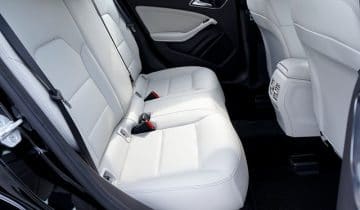In vehicular collisions, seat belts help protect the car’s passengers from injury or, worse, death.
The airbag computer initiates the igniter during a crash, activating the airbag and locking it in position around each occupant wearing a seat belt.
You must reset the airbags to reuse them safely; therefore, Original Equipment Manufacturers (OEMs) recommend replacing any defective airbag system.
Seat Belt Resetting
Seat belt resetting is a service requirement from auto manufacturers. Therefore, it’s the reason for interest in many experiments.
The concept of seat belt recalibration is that a newly replaced airbag system is recalibrated by resetting the seat belt in the vehicle. Specifically, the seat belt is inserted into the retractor, and the retractor system is cycled to reset the belt.
Calibration is performed by manually inserting the seat belt into the belt housing and pushing the seat belt into the retractor at least five times. You must insert the belt correctly, or the seat belt sensor will not recognize the belt or activate the airbag when an accident occurs.
How Does Seat Belt Calibration Work?
Because the sensors in the seat belts and the retractors are calibrated to each other and the vehicle, the seat belt resetting procedure must be performed every time a new airbag computer is replaced.
Performing seat belt resetting is necessary only with the airbag system components installed in the vehicle. You must remove the trim cover for the seat belt housing, and the airbag module must be visible.
Car owners must read and follow a vehicle technical service bulletin. Most seat belt recalibration procedures use the same steps.
How to Reset Seat Belts
- Insert the end of the seat belt into the belt housing and push it in at least five times.
- Remove the seat belt from the housing.
- Let the belt rest at room temperature for at least four hours.
- Insert the seat belt correctly, or the seat belt sensor will not recognize the belt and will not activate the airbag when an accident occurs.
Safety Tips
- Always adhere to the rules of car maintenance and follow service recommendations from the vehicle’s OEM.
- Always read and follow the directions from the vehicle’s technical service bulletins.
- Always wear seat belts, even when driving short distances or traveling at low speeds.
- Wear seat belts properly, as described by the vehicle owner’s manual.
- Seat belt repair is unnecessary when there is no visible damage and the seat belt remains the same.
- You should replace worn-out seat belts immediately.
- Improper seat belt replacement could adversely affect the function of the seat belt and cause injury.
- Do not replace a seat belt if its safety integrity is in doubt. Call the local police or sheriff’s department to report the problem.
- A professional technician should perform seat belt replacement in a certified repair center.
- Every vehicle owner should know the risks involved when driving and the dangers of not wearing a seat belt.
Conclusion
The age of the vehicle and the number of miles driven determines the need for seat belt repair and replacement. Every individual must be aware of the risks involved when driving and the dangers of not wearing a seat belt. Proper seat belt maintenance and repair ensure that you and your passengers are safe and secure when driving and become involved in a vehicle collision.
Turn to Safety Restore for top-quality seat belt repair services. We take pride in being the world’s leader in post-accident restorations of seat belts and airbag modules. Give us a call today!


